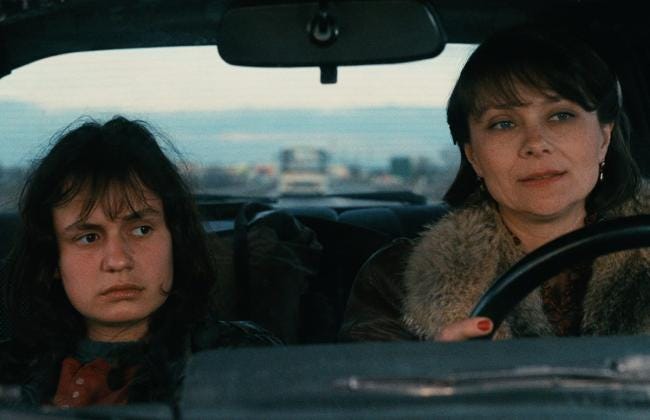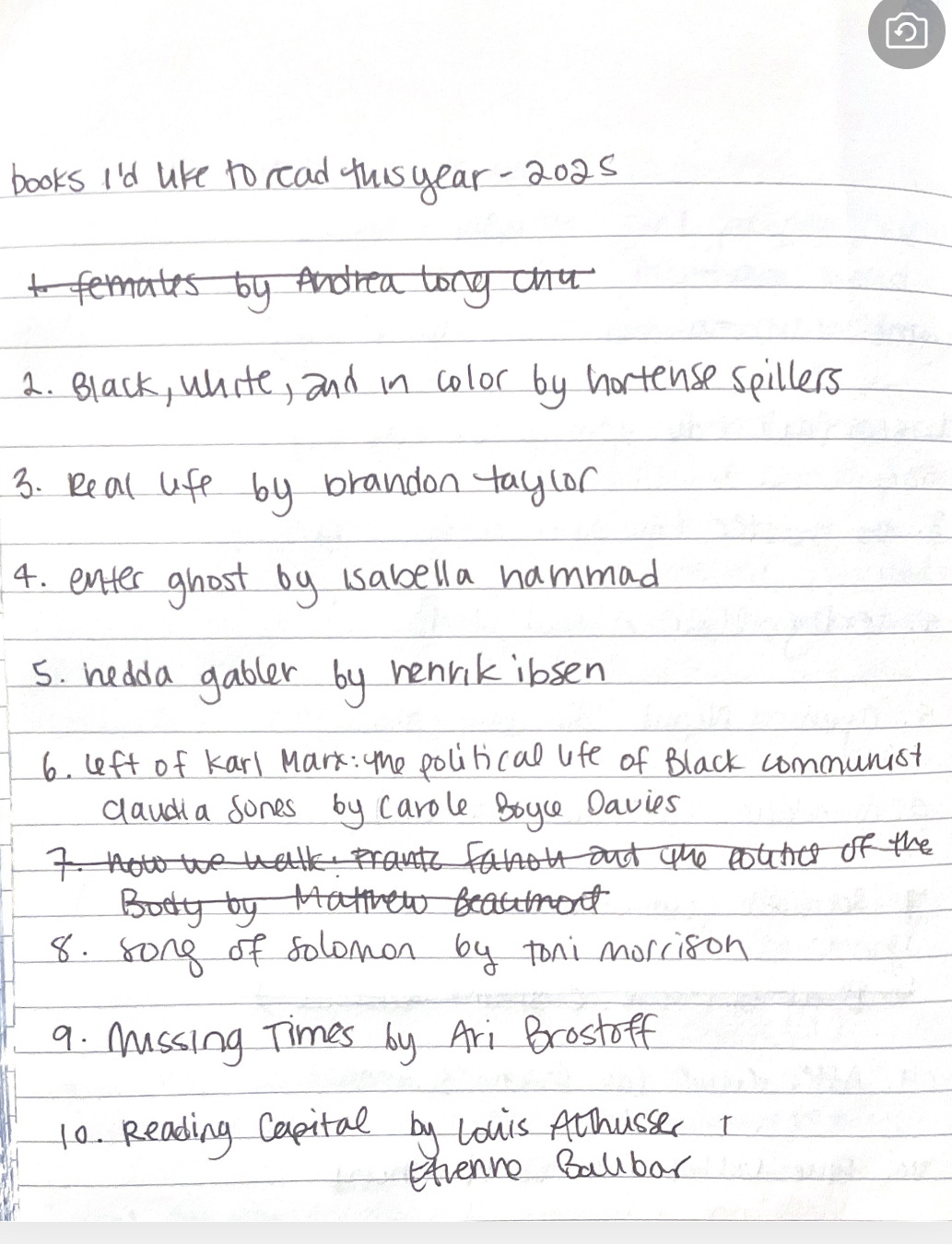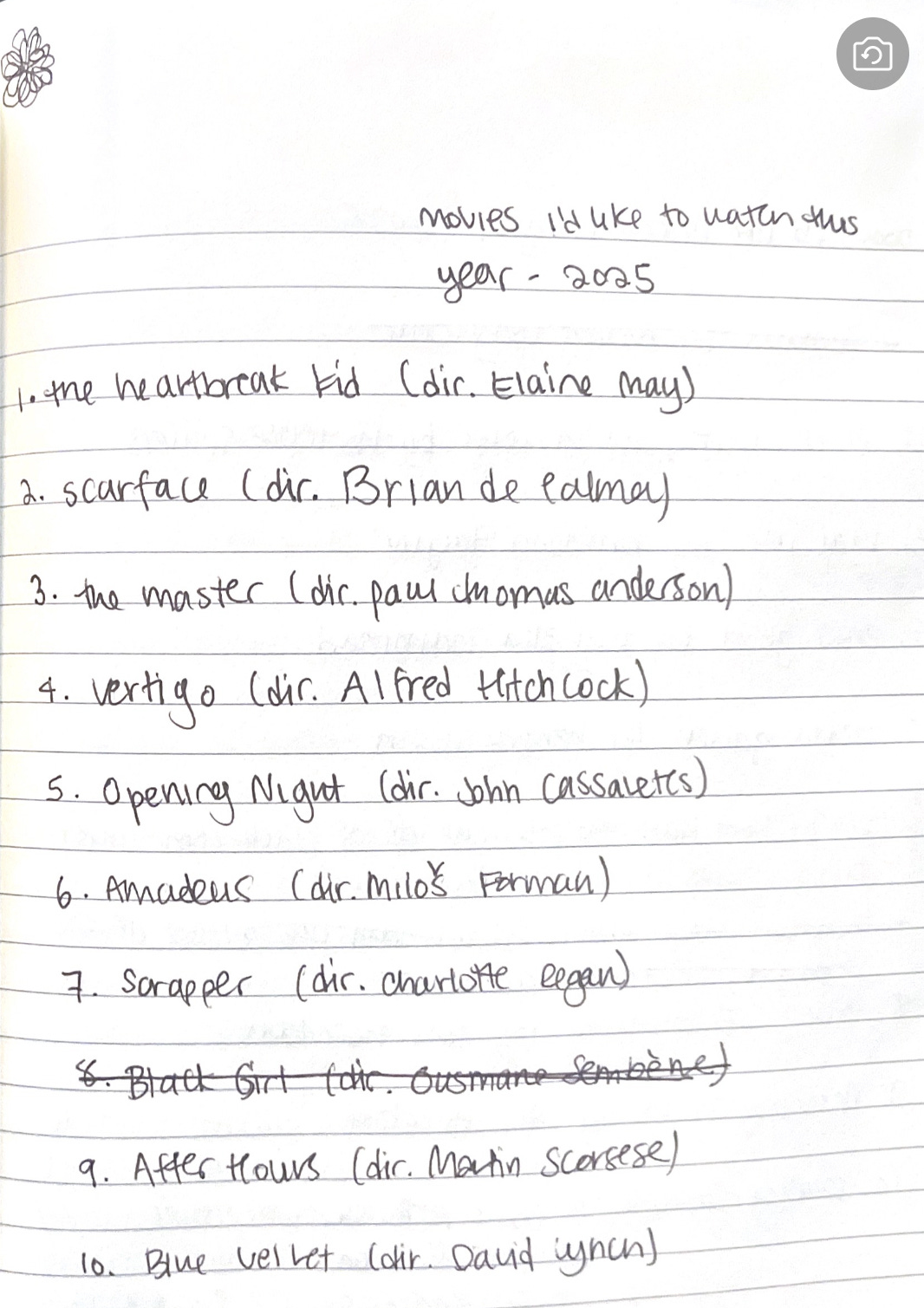COMMUNITY BOARD
Goodreads / Letterboxd / Instagram / Writers Against the War on Gaza (WAWOG)
The NY to LA silent auction organized by Rachel Davies of
and Samantha Klein is live until the 12th of this month. There are a lot of great things to bid on and all the proceeds go to GoFundMes for those affected by the fires in LA.Students for Palestine Worldwide is raising funds to “support direct material aid entering into Gaza today, to transition towards long-term Palestinian-led rebuilding.” Thank you to
for bringing this to my attention.
In Agnès Varda’s Vagabond, Mona, born Simone Bergeron, takes to the road in the middle of winter. Her plan, if we can call it that, is to camp and hitchhike. She will find sustenance where she can, bathe in the sea and, most importantly, she will be free. Free from the dull secretarial work that she’s been relegated to; free from her father’s name, which ties her to a image of personhood that she clearly finds distasteful. (When someone asks her name and then follows up by asking her father’s last name, she frowns before she answers.) This idea that wandering allows for the shedding of one sense of personhood for another, a sort of endless reinvention, is the thing that draws me to wandering narratives.
We first encounter Mona as an unidentifiable body, crumpled up in a ditch and discovered by a field worker. The police are brought in to investigate and the film “rewinds” to trace Mona’s activity leading up to this moment. Since I saw the movie on Thursday night, I’ve thought about this rewinding as a kind of resurrection. We see Mona first as a dead body, but she gets to live again for the majority of the two-hour film.
I saw the film as part of Anthology Film Archive’s Wandering Women series, programmed by scholar Nina Verneret.1 The series also includes Barbara Loden’s Wanda and Ousmane Sembène’s Black Girl, amongst several others. In her programming note, Verneret notes that the cultural and sexual revolution of the mid-60s to 90s created a backdrop for which the wandering woman could become “a major metaphor” within cinema. In their depictions of wandering women, these films critiqued the notions about what it meant to be a “public woman.” These depictions are often tragic—both the heroines of Vagabond and Black Girl die—a choice that could seem to affirm the idea that wandering is bad for women. But these films use their tragic endings not as an indictment of these women but, as Verneret notes, of “an indifferent environment” and those committed to maintaining that hostile environment.
One of the compelling questions that Varda takes up in Vagabond is that of the relation between wandering and sex, whether it be a matter of sexual availability and desire, or sexual vulnerability. The second image we see of Mona is of her bathing naked in the sea. We also see a pack of young men who hungrily watch her and debate how they can make their move. One of them exclaims that it’s easier to “get” a woman when she’s on her own. The men don’t act in the moment, but they reappear again a few more times throughout the film, leering at Mona and shouting lewd comments. Later on in the film, one of them makes an attack, sneaking up on Mona in the woods and pinning her to ground. Despite the suggestion of sexual violence, the conclusion of the encounter is left a little unclear. Just as the man pins Mona down, Varda’s camera wanders away and we hear no further signs of struggle. When we see Mona again, there are few clues that allows us to confidently determine what happens. In this way, Varda recognizes the very real threat of violence that Mona faces as a female vagabond without suggesting that it makes her wandering unfeasible. A typical rebuttal to the idea of the female wanderer is the idea that her visibility and gender pose such a threat that it undermines any desire she has to find freedom by wandering. These counterarguments suggest that the wandering woman will constantly be on guard and eventually will forgo any wandering activity. Varda’s film complicates the finality of such a conclusion. Additionally, the film depicts Mona as a woman with sexual agency2 who can act on her sexual desire but is not subjected to it. She enters relationships and enjoys herself, but is never tied down by them or punished for it. The film never seeks to punish.
Vagabond ends on the image that it begins with: Mona’s dead body crumpled into a ditch. Although a tragic ending, Varda’s choice to bookend the film’s events with the same image has that effect of feeling like a resurrection. As the beginning is the ending and vice versa, Mona’s wandering life becomes a cycle of sorts. Death and the ditch are not the end for her—she can live again and again.
AGENDA
Inspired by
, I wrote up two lists of ten books and ten movies that I want to make a concerted effort to read and watch this year. These will be in addition to the books and movies that I will encounter as part of my research and general browsing. Michelle posted scans of her handwritten lists, so I’m posting scans of my handwritten lists.I’ve seen one movie from my movie list, Sembène’s Black Girl, and read two books, Matthew Beaumont’s How We Walk (talk about overusing the OED) and Andrea Long Chu’s Females (really enjoyed). I’ve been on a podcast kick lately and have been listening to lots of Lemme Say This and Limousine. I really enjoyed Tiana Reid on the Momus: The Podcast where she talks about her work as an art critic and scholar. This Talk Easy episode about a Black family who lost their homes in the Eaton fire was incredibly moving and (surprisingly) helped me figure out a roadblock in my research. I’ve almost seen all the nominations for Best Picture; I saw Emilia Perez last week and I think we can agree that they set our girl Selena Gomez up. Finally, I’m obsessed with how perfect this Ayo Edebiri-directed Clairo music video is:
The series ends today, if you’re in New York and want to catch one of the last movies.
I would say for the most part, since there’s a situation at the end that’s kind of blurry.







Ok this wandering women series was made for u! Let’s watch Vertigo together 😈
Obsessed with the idea of a Wandering Women cinema series... and you write so beautifully about Vagabond. What a picture! <3